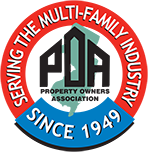By: Albert L. Sica, Managing Principal, ALS-UIC Insurance and Risk Management Consulting
When an insurance issue comes up, most people will call their broker with simple instructions, “Handle it”. While this is not uncommon, it is becoming increasingly dangerous to “abdicate” rather than delegate. Insurance and Risk Management programs need to be understood by operators of residential real estate for what it is – a means of transferring the “financial impact” of risk from the balance sheet of the property to a third party. Managing the “moving parts” effectively will allow the organization to use insurance and non-insurance risk transfer to insulate the assets of the organization rather than having possibly significant uninsured exposure. Seems simple, right? Well in theory it is, in application, however it is a complicated process that needs to be well choreographed and executed. With the recent catastrophic weather related claims, estimated over $5.5 billion since April 1st, there is increased pressure to preserve underwriting profit. This is where the insurer takes your premium and doesn’t pay a claim. It’s time to pay attention.
The Risk Management Process is simple. You must identify and understand loss exposures, analyze and measure the financial impact, determine what risk mitigation steps are appropriate and commercially feasible, implement those risk-transfer steps and monitor the process to make sure they are producing the desired results. Working closely with advisors to assist in understanding this process and making it work for your organization is essential. Just “buying insurance” for the cheapest premium is not enough.
“What risks do we have and how bad can it get?” An organization needs to understand their material risks and how those risks can be mitigated through the use of various transfer techniques including buying insurance coverage. Buying insurance is not a panacea as there are deductibles, exclusions, conditions and warranties that can all impact how much risk is actually transferred. A “gap” in coverage will result in an unexpected, uninsured loss which ultimately shows up on the balance sheet of the unwitting organization. Property Owners have unique exposures to loss resulting from first party (damage to your property-premises) and third party (liability to others resulting from the organizations negligence). Materiality of risk should be determined. Can the organization take a $5,000 loss but not a $100,000 loss? Knowing the risk you can afford to take will allow you to make clear decisions on how to structure risk transfer and to appreciate the cost to do so.
“What can I do to cover these risks?” An organization needs to examine internal process and work closely with industry professionals to work through the risk management process. The objective is to arrive at lowest Total Cost of Risk (TCOR) which can be achieved by a Risk Management Audit (RMA). A properly conducted RMA should be commissioned periodically (no less than every 24 months) and be provisioned by an independent third party who is not affiliated with the organization, does not write (or is a candidate to write) insurance coverage for the organization and who will provide a report to serve as guidance for future action.
The RMA should consist of several key parts. 1.) A survey of the physical property including a replacement cost construction appraisal using a valuation service such as Marshall & Swift. 2.) A review of the operational practices of the organization including how they manage contractors, commercial tenants and what risks could arise. 3.) The third area to consider is the insurance coverage that is currently in place. Does the coverage include all the components that the organization should have and is the coverage scope of each as competitive as possible? The RMA should outline if the support services from the broker or claim administrator are effective. It should also make particular note of exposures that are not included in the insurance policy scope and which the organization may want to consider. Typical examples of this are environmental coverage, discrimination coverage, rebuilding to code (yes that is excluded in “normal” property policies). These are the “gaps” that make the organization responsible, knowingly or unknowingly, for the financial impact of the loss. The RMA can then be reviewed by the Management Team and include a forward looking action plan on how to manage those exposures that have been identified and the insurance renewal strategies.
The insurance industry has become very clever with policy terms to obligate an insured to do certain things, such as obtain certificates from contractors, for instance, otherwise coverage will not apply. Imagine that depressing news when thinking you have coverage only to learn there was a condition that you did not comply with. “If I only had known” is not much solace when faced with a $1M claim that is being denied by your carrier. Today, an insured must take the time to understand the process and how the coverage works. Take the steps to make informed business and risk management decisions and you will reduce the amount of unpleasant surprises you receive.
Albert L. Sica is the Managing Principal at ALS-UIC, an independent insurance and risk management firm in Upper Saddle, River, NJ. You can get more risk management tips at www.als-uic.com.
